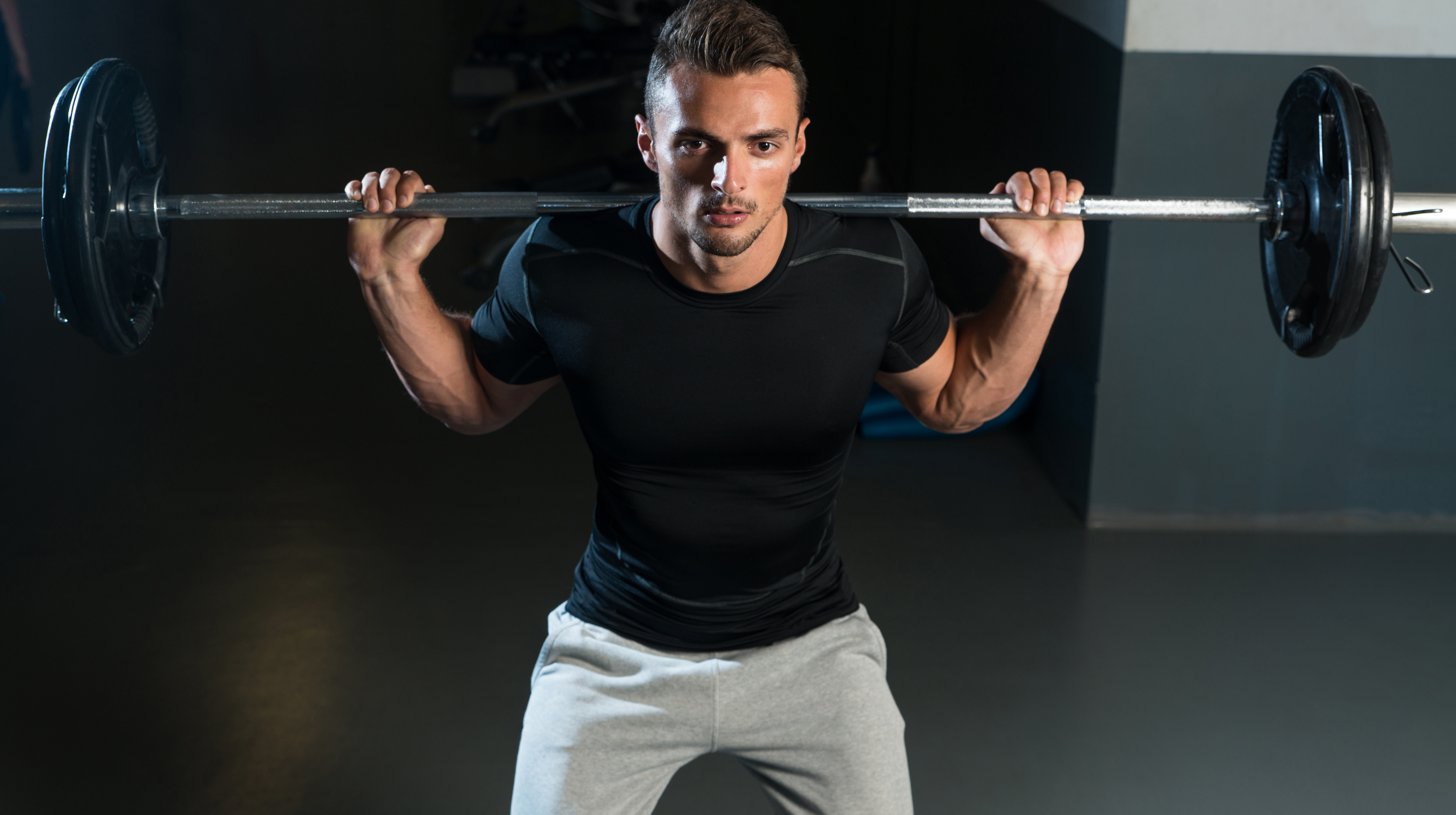3 Exercises Skinny Guys Can’t Skip at the Gym
May 1, 2020 mindpumpWhen I get clients on the skinnier side, their biggest struggle is putting on size. With that, also usually comes bad programming, or the lack of knowing which exercises to do when they are in the gym to maximize their size. I get it. The natural tendency is to look at what the IFBB pro bodybuilders are doing, and to just copy them. The problem is, more isn’t necessarily better. More often than not, I find skinnier clientele focusing on the smaller muscle groups like arms and shoulders rather than the bigger chest, back and legs.
I’ll save going into detail as to specific programming, and why you shouldn’t spend as much time focusing on smaller muscles, but for this article, I’d like to focus on what I think are the top three exercise, regardless of your programming, should be staples in your workout plan if your goal is to add size.
-
Squat
I don’t know many people that would disagree on this one. Squat is a staple for any lifter, no matter their shape, size, or years of experience. One of the key components to building muscle is having compound exercises that hit multiple muscle groups at once. This ensures optimal recruitment, and stimulates the growth of as much muscle as you can during your session. After all, what’s the point of spending an hour in the gym, if your bicep is the only muscle you worked?
The squat recruits glutes, hamstrings and quads. Boom. That’s already your entire lower body being stimulated in just ONE lift. If you are a taller, skinnier guy, they’re usually made fun of for their chicken legs. So let’s break the stereotype! Get some size on those wheels by choosing smart movements.
One thing to keep in mind when I say squats though, is getting as low as your form allows you to. This means a couple things. If you’re on the taller side, it might not necessarily be realistic to get ass to grass, but you want to eventually work to get as low as you can (or at least before you get the ‘butt wink’). If you have longer levers you might not be able to get as low as those short, stocky guys. This further emphasizes that you shouldn’t just blindly be copying what you see others do. We’re all built differently. Working to get as much depth as you can ensures you’re recruiting all muscles of the lower body. I see too many guys doing quarter squats for the sake of hitting higher numbers, and all you are really doing is focusing just on the quads and leaving a lot on the table in terms of growth.
It doesn’t have to just be a traditional back squat either. You can vary the lift every cycle to lifts like olympic back squat, low bar back squat, front squat, or zercher squat.
-
Deadlift
Another compound lift not many people would disagree with having on this list. The deadlift primarily hits what’s called the posterior chain of the body. That is the hamstrings, glutes, low back, lats, and upper back (although like the squat, it’s more so isometrically contracting the upper back muscles). Again, the great thing about this exercise compared to most, is that it is hitting so many muscles groups in one shot. This is what we want! ESPECIALLY if we are struggling to put on size. Focus on getting the form down. Don’t round your lower back. Make sure you spend the time early on, cueing the right muscles with lighter weights, so that as you start adding weight and getting stronger, you don’t have to compensate or go back down in weight to make up for shotty technique.
You can change the type of deadlift too throughout your workout cycles. Start with a traditional deadlift, then switch to a sumo stance. Next you can do closer or wider grip, trap bar deadlift or romanian deadlift. This should help mix up the monotony as you progress slower and slower with the weights and need to mix it up without completely changing the lift.
-
Incline Bench Press
So I decided to make the incline bench the third exercises for a couple reasons. The squat and deadlift are pretty much stimulating all muscles of the lower body, and while not to the MAXIMUM extent, still hitting the back muscles. The pulling from the deadlift will also get some bicep activation in there especially, as the weights go up. The only muscles left that really aren’t being hit at all are the chest, triceps, and possibly front deltoids. That is why I opted for the incline bench.
You are effectively hitting both muscles (rather than having to decide between overhead press or flat bench), and some research has shown incline bench is better than flat bench at activating the pectoral muscles. The incline angle should also be a little more friendly on your shoulder girdle. A lot of times, the flat bench (due to bad form or overcompensation of shoulder muscles) tends to cause a lot of tendonitis in the shoulder. The higher angle should help naturally set the shoulders and arms in a more proper trajectory allowing the chest to lead in front of the shoulders.
By focusing on these three major lifts, and keeping them as part of your normal workout, you are allowing yourself the biggest potential for growth. It will also help play a big role in achieving that thick, power look you probably see on other lifts which give them that fullness. Give these exercises a try for 3 months, with good form and I guarantee you’ll look different. Just make sure you’re properly chasing progression in the form of more reps each week or higher weight.







